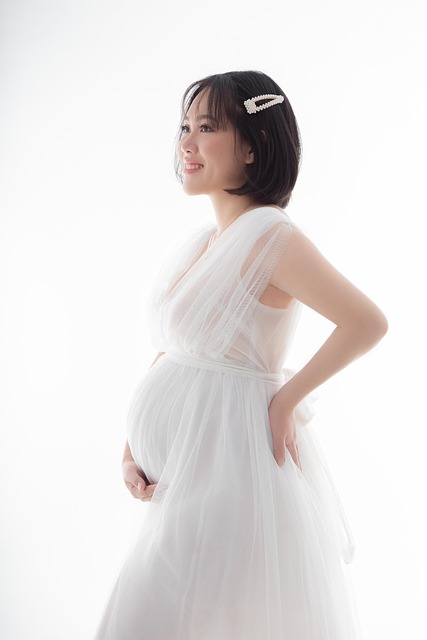At 28, my husband and I felt ready to embark on the adventure of parenthood after three wonderful years of marriage. After completing a course of Accutane, a medication that requires a six-month clearance period before pregnancy due to its potential for birth defects, we were eager to start our family. We had just returned from a delightful trip across France with friends, and everything seemed perfectly aligned for settling down and having children.
However, the journey didn’t unfold as we had anticipated. A year passed with no success in conceiving. When I finally saw those two pink lines on the test, relief washed over me; the stress and worries seemed to evaporate. Everything was going to be alright.
Just six weeks into my pregnancy, while at the dog park with my furry friend, I was struck by an intense, stabbing pain in my abdomen. It was not the usual first-trimester nausea but a severe agony that left me breathless. Unsure if something was seriously wrong, I sought medical advice. One doctor told me to rush to my physician, while another reassured me it was likely nothing. The pain persisted, and with my husband out of town, I made the drive to the clinic alone.
After a vaginal ultrasound and some questions, the diagnosis was an ectopic pregnancy—meaning the embryo was trapped in a Fallopian tube. The prescribed treatment was a chemotherapy injection intended to help the embryo pass. Despite the unusual circumstances, I felt a glimmer of hope; at least I knew I could conceive.
Unfortunately, the injection failed, leading me to surgery. Upon waking, I learned the situation was even more complex; my embryo had implanted on my bladder. My doctor expressed excitement, stating that such cases are rare, and he felt “lucky” to witness one in his career.
I tried to move on without dwelling on the emotional weight of losing my pregnancy, holding on to the knowledge that I could indeed get pregnant. My husband, Mark, and I quickly resumed our efforts to conceive again, taking us a grueling year and a half. The intimacy of our relationship transformed into a stressful game of baby-making. Yet, our patience eventually led to the joy of welcoming a beautiful daughter into our lives.
Two years later, as I attempted to expand our family, I faced two miscarriages—one ended naturally, while the other required a hospital visit for a D&C procedure. Seeking answers, we consulted a fertility specialist who ran tests and revealed that I had “Diminished Ovarian Reserve,” indicating that my eggs were too old to conceive naturally. The doctor suggested considering egg donation or adoption.
The cost of an egg donor was around $20,000, while domestic adoption started at $10,000, with international options running even higher. I felt overwhelmed by the choices and advice that came my way, including doubts about using someone else’s egg. I spoke to a woman who had adopted two children from Russia, and the process sounded daunting. I appreciated the beauty of adoption but knew it wasn’t my preferred path.
Seeking a second opinion, we consulted a different fertility clinic, where hope resurfaced with the possibility of In Vitro Fertilization (IVF). This technique involves fertilizing an egg and sperm outside the body before implanting it in the uterus. I began the hormone injections and blood thinners, learning to administer the needles despite the bruises on my belly. Mark’s support was invaluable, though the experience was far from romantic for him.
The first IVF cycle ended in disappointment, darkening my spirits. I began to convince myself that perhaps our family was meant to be a trio and that my daughter might not need a sibling after all. But deep down, I knew I was destined for more.
Determined, we decided to give IVF another shot. After a second round of treatment, we were thrilled to have four viable embryos. My doctor suggested transferring only two to minimize the chance of a complicated multiple pregnancy, but I chose to put all four in. I was willing to risk it all for a chance at one more child.
At six weeks, the ultrasound revealed three beautiful embryos with beating hearts. My first question to the doctor was whether they would all survive, to which he confidently replied they would. I also inquired if there were any hidden surprises, but he assured me there were none.
After seven years of navigating the highs and lows of conception, including an ectopic pregnancy, two miscarriages, and two IVF cycles, I now have four beautiful children. The journey has been far from easy, often testing my patience, emotions, marriage, and finances. However, I learned valuable lessons along the way:
- Always seek a second opinion; without it, I wouldn’t have my beautiful triplets.
- Acknowledge the pain of miscarriages but don’t let them define your future.
- Trust your instincts—sometimes putting all your eggs in one basket is necessary for the family you desire.
If you’re on a similar journey, consider exploring options like an at-home insemination kit, which can provide insights into self-insemination methods. For additional resources, check out this excellent overview of artificial insemination. And if you’re looking for ways to improve fertility, there are specialized products that can support men as well.
In summary, my path to motherhood has been a rollercoaster of emotions, loss, and ultimately, joy. The journey taught me resilience and the importance of hope, proving that sometimes it’s worth it to take a leap of faith.
Keyphrase: Journey to Parenthood
Tags: [“home insemination kit”, “home insemination syringe”, “self insemination”]
